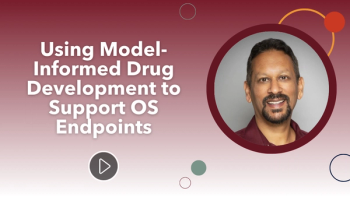
Tips to Get to (and through) FDA Approvals Faster
While thousands of hours are spent in the hopes of finding more effective treatments, many of them are rejected due to administrative errors. These three tips can help reduce the frequency of common administrative mistakes during clinical trials.
Clinical trial professionals spend thousands of hours recruiting patients, testing drugs and therapies, and documenting results in the hopes of finding more effective treatments. The day a drug is deemed good enough to be submitted to the FDA is a day to be celebrated.
So why are so many applications rejected? Barring issues with drug efficacy or data quality, you might be surprised to know that the top reasons for rejection are based on administrative issues.1 This includes errors like submissions sent to the wrong center, missing data or documents, process inconsistencies, or not following the correct electronic common technical document (eCTD) format.
Having an application kicked back because of documentation errors can have a significant impact on the overall schedule of a trial. For example, when the FDA receives an investigational new drug (IND) application submission, it’s assigned a receipt date. The receipt date establishes the FDA’s 30-day safety review cycle. After the review cycle, clinical investigations may begin.2 If the submission is rejected, the team must fix the errors and resubmit. The 30-day safety review cycle then starts over, significantly delaying any forward movement. Over time, this can mean getting to market late and even missing out on millions in revenue to competitive drugs.
How can clinical trial professionals reduce the possibility of common administrative errors that bog down submissions and approvals? Building a proper and streamlined workflow, creating visibility through real-time status reports and dashboards, and promoting collaboration among teams can all help. Read on to uncover how these three tips can help you avoid major delays.
Cut Out the Silos! Leverage A Centralized Workflow Management System
Clinical trials and the processes that drive them have matured over the past few decades. Most CROs and in-house pharma teams managing trials have designed their own proprietary models that help manage tasks and associated processes from start to end. Unfortunately, many of these processes and tools are based on traditional, time-consuming and error-prone manual inputs or disparate software platforms that create silos of data. Often, separate teams managing similar processes document their data in varying ways, based on nothing more than history or preference.
The time has come where CROs and in-house pharma teams need to look at core processes and make a complete transformation. The idea of incremental system change will no longer be able to sustain the expectations for competitive advantage or profit margins required to move into the next decade.
By deploying a centralized workflow management system, clinical teams can reduce errors and improve the speed and quality of documentation. For example, a unified platform for managing all aspects of a clinical trial can help:
- Automate key dates and triggers to keep all team members on the same page
- Provide centralized dashboards for both high-level and detailed-level reporting on status and progress of tasks
- Flag data inconsistencies to ensure quality inputs
- Connect existing software systems to unify information sharing and handoffs
- Create customized templates (such as eTMF or eCTD) that can be re-used or modified for each study
Promote Collaboration Among Teams
Every team needs to be focused on their primary responsibilities, but not at the expense of poor communication between teams. Breaking down silos among employee roles is another way to improve efficiencies and data quality. When teams (rather than individuals) take responsibility for clinical outcomes, it creates a group ownership structure that promotes greater accountability across the team. It also breeds faster response times to problems as they arise.
By striving to proactively define work teams, assign goals and build timelines into your workflow, organizations achieve:
- Higher visibility into collective actions that can impact the study as a whole
- Less risk. With duplicate eyes on each stage of a study, you mitigate the risk of errors based on silos of responsibility
- Flexibility and agility to change course. Working in a collaborative environment allows teams to more quickly address unexpected findings and adjust in real-time
- A stronger support system for individuals that encourages employee satisfaction and tenure
- Cleaner handoffs. Transition of work ownership among team members and between teams creates a lower probability of data loss
Create 360-degree Visibility Through Real-Time Status Reports and Dashboards
One of the most common complaints heard from study investigators and managers is a lack of visibility to the big picture. Many CROs have one technology system for study start-up, a clinical trial management system (CTMS) that tracks ongoing activity with study sites, and a third electronic case report dorm (eCRF) system that handles documentation related to the trial once a study is active. While some of these are off-the-shelf software packages, many are homegrown or are based on complicated and fragile spreadsheet applications.
Having access to all this information is critical for the study, but the disparate systems don’t support visibility across collective activities. For example, simply running a report on each study site and their individual progress with study participants could require manually counting documents submitted from hundreds of sites and creating a new spreadsheet of data. This manual data manipulation subjects the information to error and requires excessive amounts of administrative time.
With a single work management platform to track target research initiation, preclinical, and clinical activities all the way through to FDA submission, project directors and managers have one view of the entire process, from start to finish.
This makes reporting much more efficient and accurate, as it can be based on real-time data pulled from multiple sources. By creating dashboards for key study metrics and customizing them for different staff roles or needs, a team can have a true 360-degree view of the project.
This high level of visibility is needed to determine what’s on time, what’s falling behind and requires attention, and what’s been completed. Providing reports up to superiors or sponsors is also much easier and allows study investigators and managers to focus on running the study, rather than on administrative reporting.
Keep in mind that the projected date for mandatory electronic submissions is now May 2017 for new drug applications (NDAs), biologic license applications (BLAs), abbreviated new drug applications (ANDAs), and drug master files (DMFs).3 Many organizations are planning to make some level of change to the technologies and systems they use to track study progress and submit applications, but time is of the essence. Many organizations still submit applications manually, so they must act quickly to meet next year’s projected deadline.
This makes it the ideal time to evaluate the ROI of a new end-to-end workflow management system to replace outdated single-function software tools. By combining new technologies with efforts to increase team collaboration, clinical trial teams can condense the time and effort it takes to get to (and through) FDA approvals faster.
Siva Reddy is Chief Technology Officer, Aurotech Corp.
References
Newsletter
Stay current in clinical research with Applied Clinical Trials, providing expert insights, regulatory updates, and practical strategies for successful clinical trial design and execution.






.png)



.png)



.png)
.png)
